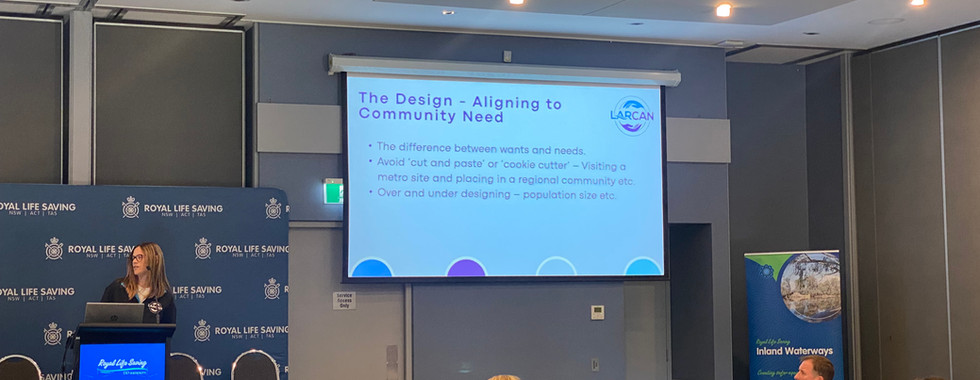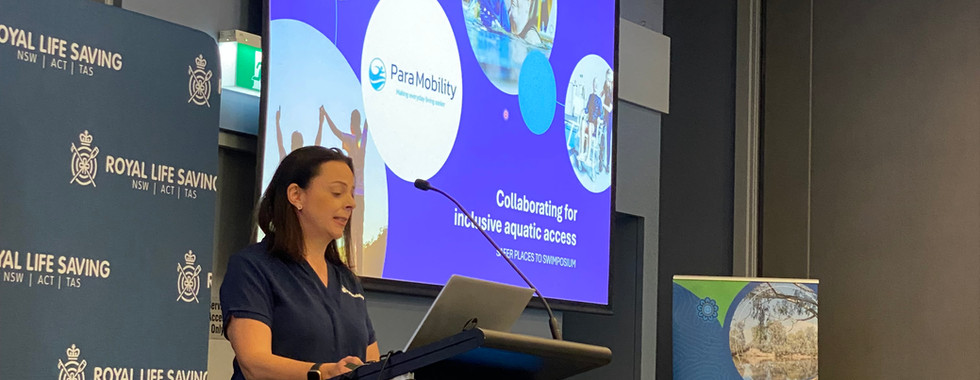Swimposium Brings Aquatic Industry Together to Chart Future Directions
- Royal Life Saving
- Sep 3
- 3 min read
The 2025 Swimposium, held in the Hunter Valley on 27–28 August, brought together leaders from across New South Wales and beyond to tackle some of the biggest challenges and opportunities facing the aquatic industry.
Over two days, more than 100 delegates from local councils, government agencies, facility operators, peak bodies, and community representatives gathered to share insights, debate priorities, and shape a collective agenda for the future of aquatic facilities and water safety.
Key Themes and Insights
Regional Realities: Representatives from regional councils spoke openly about the pressures of ageing infrastructure, limited funding streams, and lifeguard shortages. Case studies, such as Inverell Aquatic Centre, showcased how innovative approaches can still deliver high-impact outcomes for smaller communities.
Managing Change: Parramatta and Inner West councils reflected on a decade of change, highlighting the need for flexible models to manage diverse facilities, shifting community expectations, and evolving risk landscapes.
Sustainability Front and Centre: Presentations explored practical strategies for cutting energy use, reducing waste, and improving inclusivity while minimising disruption to community access and staff workloads.
Inland Waterways: A strong focus was placed on the unique risks of NSW inland waterways, with calls for targeted investment in signage, infrastructure, education campaigns, and partnerships with local communities and First Nations groups.
Voices from the Industry
Interactive Slido sessions and a hands-on workshop gave delegates the opportunity to identify shared priorities and imagine bold solutions. Emerging messages included:
An urgent call for a NSW and Federal Government Aquatic Infrastructure Renewal Strategy, rather than ad-hoc project grants.
Recognition that regional councils are under significant financial strain, forcing them to rethink how they maintain facilities and uphold safety standards simply to remain open.
A strong push for a more unified industry voice, with inland waterways stakeholders emphasising the need for targeted investment and consistent advocacy alongside the aquatic facility sector.
A call for innovative approaches to facility design and builds that reduce operating costs, improve sustainability, and deliver more inclusive spaces for diverse communities.
A clear need for sustainability and adaptation investment and incentives to help facilities cut emissions, manage energy and water use, and future-proof operations against climate impacts.
Recognition that aquatic facilities must evaluate not only safety, but also emerging program areas such as sustainability performance and aquatic health and safety systems, to align with community expectations and evolving standards.
Optimism around cross-sector partnerships with health, education, sport, and environmental organisations to secure the industry’s future.
Insights from the workshop activity, where participants were tasked with designing their ideal aquatic facility based on a community profile and varying budgets of $10 million, $20 million, or $40 million. This exercise highlighted the trade-offs councils face between ambition and affordability, the importance of designing for real community needs, and the potential for innovation and collaboration when resources are constrained.
Looking Ahead
The Swimposium concluded with a collective commitment to take forward a set of clear messages to Government and Industry:
Long-term policy and funding certainty is critical.
Regional councils require tailored support to maintain safe, inclusive, and sustainable aquatic facilities.
The industry must work together to strengthen advocacy and highlight the social, health, and community value of aquatic centres and waterways.
A huge thank you to all of the speakers who presented at The Safer Places to Swimposium 2025.
































































Comments